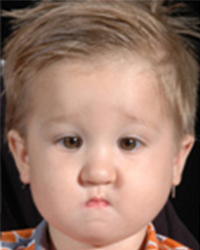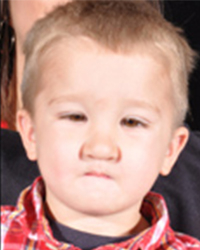Pierre Robin Sequence in Dallas, TX
The treatment of Pierre Robin sequence is complex, as it can involve a number of other disorders and conditions. Parents of children who have this sequence can find answers to all their questions at the International Craniofacial Institute in Dallas, Texas.
What Is Pierre Robin Sequence?
Pierre Robin sequence is a craniofacial condition, not a syndrome or a disease. It is referred to as a sequence because it results in a series of events during a baby’s early development in the womb. Pierre Robin sequence may occur by itself or as part of a disorder or syndrome. More than 30 syndromes include Pierre Robin sequence within their symptoms. For example, approximately 40 percent of patients with Pierre Robin sequence also have Stickler syndrome. Frequency estimates range from one in 8,500-30,000 live births.
Individuals with this syndrome are typically characterized by the following differences:
- small lower jaw with receding chin
- cleft palate
- large tongue positioned too far back in the mouth
Additional characteristics that may be present include the following:
- feeding problems
- breathing problems
- sleep apnea
- ear infections
- hearing loss
Pierre Robin sequence was named for French dental surgeon, Pierre Robin (1867-1950). Although others had described the symptoms earlier, he linked all the symptoms (and included breathing problems) in the 1920s.
Pierre Robin sequence is also known as Pierre Robin malformation sequence, Pierre Robin complex, and Robin anomalad and was commonly referred to as Pierre Robin syndrome until 1974. At that time, the term sequence was introduced to be used for conditions including a series, or sequence, of malformations initiated by a single anomaly.
The Causes of Pierre Robin Sequence
The exact cause of Pierre Robin sequence is unknown.
Since it is not genetically linked, most cases are sporadic, and the risk of an individual with Pierre Robin sequence to have a child with this sequence is minimal, unless it is part of a syndrome. Similarly, the chances of parents who have a child with Pierre Robin sequence to have another child with this same sequence are minimal, unless the child’s condition is part of a syndrome.
There does not seem to be a connection between anything the mother did (or didn’t do) to cause her baby to have Pierre Robin sequence.
Pierre Robin Sequence Treatment
When a child is born with craniofacial issues, we evaluate many factors to develop the most effective treatment plan. We study how the child’s underlying structures and functions are affected, including the brain and facial skeleton, the central nervous system, the senses, and parts of the spine (cervical vertebrae). In patients whose facial skeleton is affected, we carefully identify resulting changes in the soft tissues of the face, mouth, and top of the throat (pharynx). It’s imperative to determine quickly how their condition is affecting normal, critical functions such as breathing, swallowing and speaking so we can promptly begin appropriate treatment.
In most syndromes (in this case, sequence), the abnormal growth patterns continue throughout the growing years because they were programmed into the body while the embryo was forming. To correct and repair the child’s areas of concern, we evaluate the anatomical and functional problems and carry the treatment plan out in stages. At each new level of maturity, we’ll take advantage of the natural windows of opportunity for reconstruction and other surgical procedures.
We must time each intervention carefully because when we change or correct part of a child’s body, that surgery indirectly affects the body’s growth and development “messages.” Our broad range of experience allows us to not only identify the most appropriate timing for repairs, but also to respond to unpredictable changes as we go.
Essential factors will lead to the best outcome; for our part, accurate diagnosis and a customized, expertly carried-out treatment plan are primary concerns. This applies to reconstructive surgery, as well as aesthetic surgery, to create the very best facial and corporal appearance. For your part, as the parent/family, the outcome depends on your commitment to play the key support role throughout the child’s various surgeries, physical changes, social adaptations, academic development, and everyday life skills.
In all syndrome/sequence conditions, our treatment goals fall into similar categories – to give the child’s brain and all sensory organs room to grow and develop and to make it as easy as possible for the child to breathe, eat, sleep, communicate, and become as independent as possible.
Why Choose International Craniofacial Institute?
The International Craniofacial Institute is one of the leading institutes for craniofacial disorders and conditions. Our doctors and surgeons have treated over 17,000 patients with genetic disorders worldwide. These disorders are most often centered on craniofacial issues, palate repair, and cleft lip repair. In addition to diagnosing and treating these issues themselves, the doctors and specialists also train other professionals from all over the world. The International Craniofacial Institute was founded by Dr. Kenneth Salyer, a surgeon, in 1971, and today it is headed by Dr. David G. Genecov.
If you have a child or another family member who is suffering from a genetic syndrome or has a cleft lip, cleft palate, or craniofacial complication, the staff at the International Craniofacial Institute can help. Contact us today to talk with the doctors and staff about your options and how we can help.


